 by our College Data Analytics Team
by our College Data Analytics TeamCU total enrollment is approximately 2,704 students. 1,886 are undergraduates and 80 are graduate students.
Male/Female Breakdown of Undergraduates
The full-time CU undergraduate population is made up of 57% women, and 43% men.

For the gender breakdown for all students, go here.
CU Racial/Ethnic Breakdown of Undergraduates

| Race/Ethnicity | Number |
|---|---|
| White | 1,125 |
| Unknown | 322 |
| Black or African American | 216 |
| Hispanic | 111 |
| International | 66 |
| Asian | 29 |
| Native Hawaiian or Pacific Islander | 0 |
| Multi-Ethnic | 0 |
See racial/ethnic breakdown for all students.
Male/Female Breakdown of Graduate Students
About 45% of full-time grad students are women, and 55% men.

For the gender breakdown for all students, go here.
CU Racial-Ethnic Breakdown of Graduate Students

| Race/Ethnicity | Number |
|---|---|
| White | 33 |
| Black or African American | 18 |
| International | 18 |
| Unknown | 10 |
| Asian | 1 |
| Hispanic | 0 |
| Native Hawaiian or Pacific Islander | 0 |
| Multi-Ethnic | 0 |
See racial/ethnic breakdown for all students.
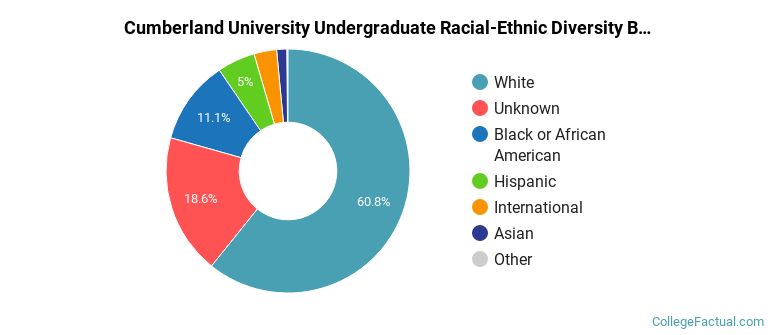
| Race/Ethnicity | Number |
|---|---|
| White | 1,617 |
| Unknown | 484 |
| Black or African American | 310 |
| Hispanic | 133 |
| International | 92 |
| Asian | 50 |
| Native Hawaiian or Pacific Islander | 0 |
| Multi-Ethnic | 0 |
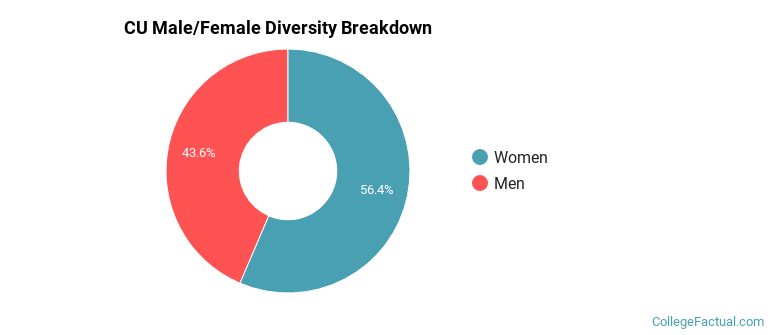
There are approximately 1,578 female students and 1,126 male students at CU.
CU ranks 1,687 out of 2,183 when it comes to geographic diversity.
6.15% of CU students come from out of state, and 1.79% come from out of the country.
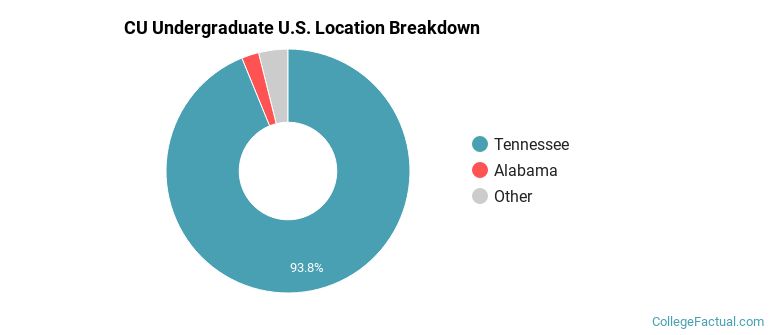
The undergraduate student body is split among 11 states (may include Washington D.C.). Click on the map for more detail.
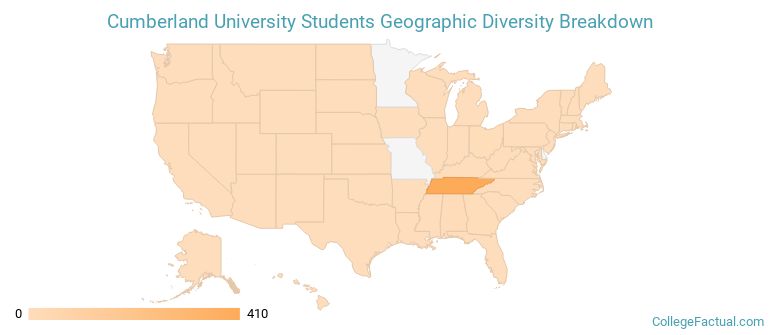
| State | Amount |
|---|---|
| Tennessee | 410 |
| Alabama | 10 |
| Georgia | 3 |
| Ohio | 3 |
| Florida | 2 |
Students from 27 countries are represented at this school, with the majority of the international students coming from Canada, United Kingdom, and Spain.
Learn more about international students at CU.
A traditional college student is defined as being between the ages of 18-21. At CU, 55.01% of students fall into that category, compared to the national average of 60%.
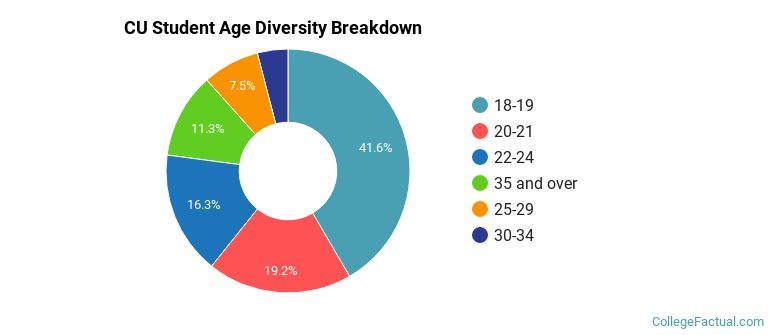
| Student Age Group | Amount |
|---|---|
| 18-19 | 871 |
| 20-21 | 402 |
| 22-24 | 342 |
| 35 and over | 237 |
| 25-29 | 158 |
| 30-34 | 85 |
| Under 18 | 0 |
Footnotes
*The racial-ethnic minorities count is calculated by taking the total number of students and subtracting white students, international students, and students whose race/ethnicity was unknown. This number is then divided by the total number of students at the school to obtain the racial-ethnic minorities percentage.
References